Projects
Sewer connection, Wicken, Northants
We were approached by a private customer, who had a Treatment Plant in his back garden, but which was not working to current regs, and who wanted connecting to the public sewer in the Highway.

Objective
Our objective was to make a connection into the public sewer, in the Highway and 35 metres away from the property down the road. We then had to lay pipework across the road, up the grass verge and into the private property, and to a point where existing foul drainage could be re-routed from the old septic tank and into the public sewer.
About the project
Our customer already had a treatment plant in his garden, which was serving his relatively new property. However the effluent was struggling to soak away in whatever drainage system had been installed for the treatment plant. Also, under new regulations that came into effect in 2020, you are no longer permitted to install a replacement treatment plant in the event that a public sewer exists in close proximity, and there was indeed a foul sewer in the carriageway outside the property.
If you need a sewer connection doing, please contact us as early as possible, there are many reasons why the lead-time for a sewer connection can be up to a year or more. For more information click here.
We acted on behalf of our customer to facilitate the Section 106 application to Anglian Water, as we usually do. We put a basic drainage plan together, which we submitted to Anglian Water and which was accepted.
With the approval ‘in hand’, we were then able to apply for the section 50 to Highways. With the road being so narrow, it was clearly going to require a road closure. Unfortunately this adds 3 month leadtime onto the whole process, and also adds extra cost.
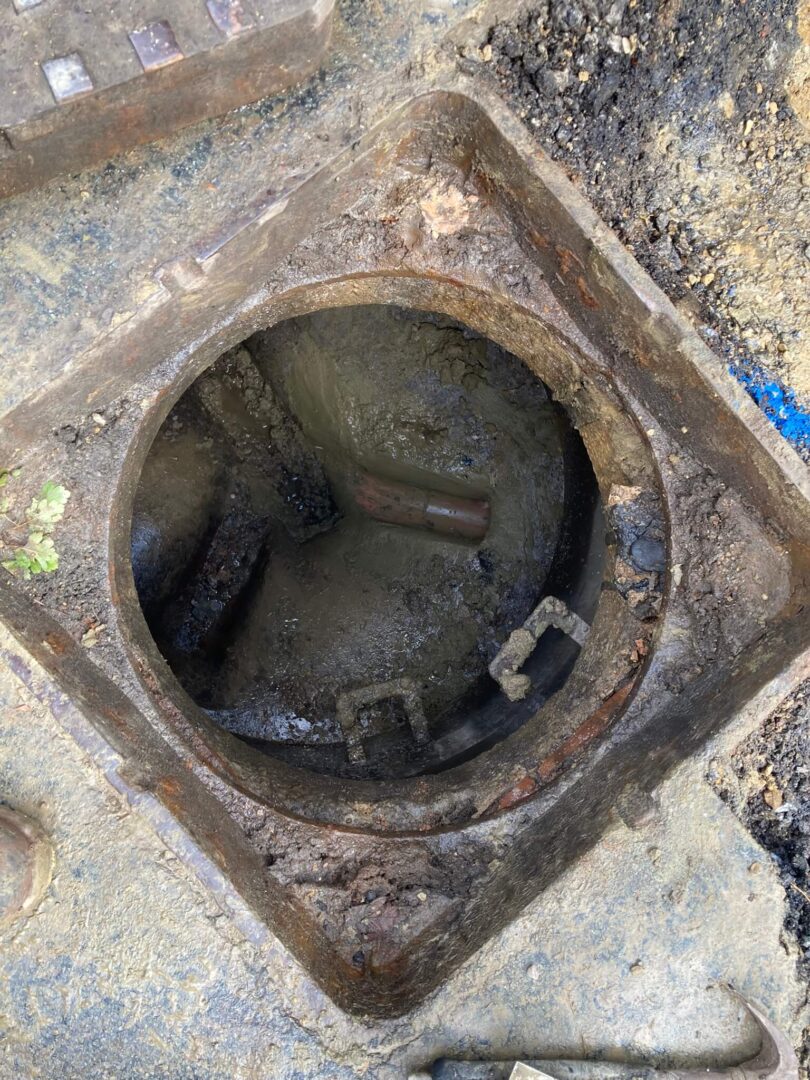
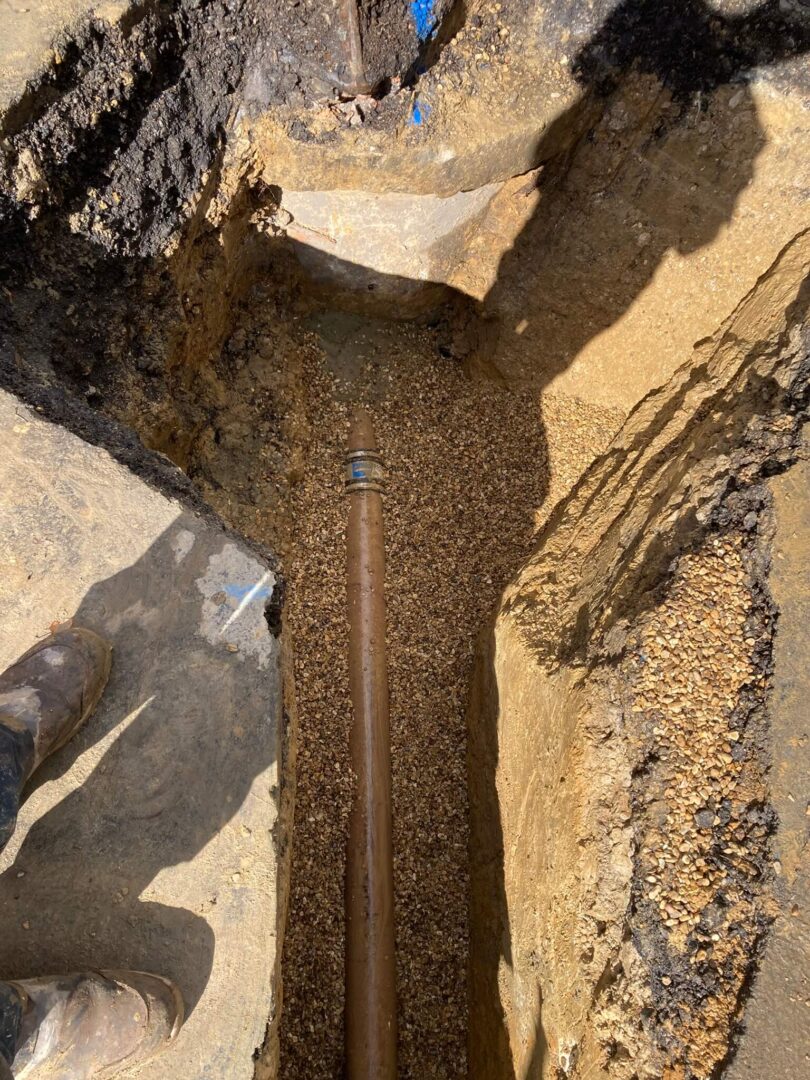
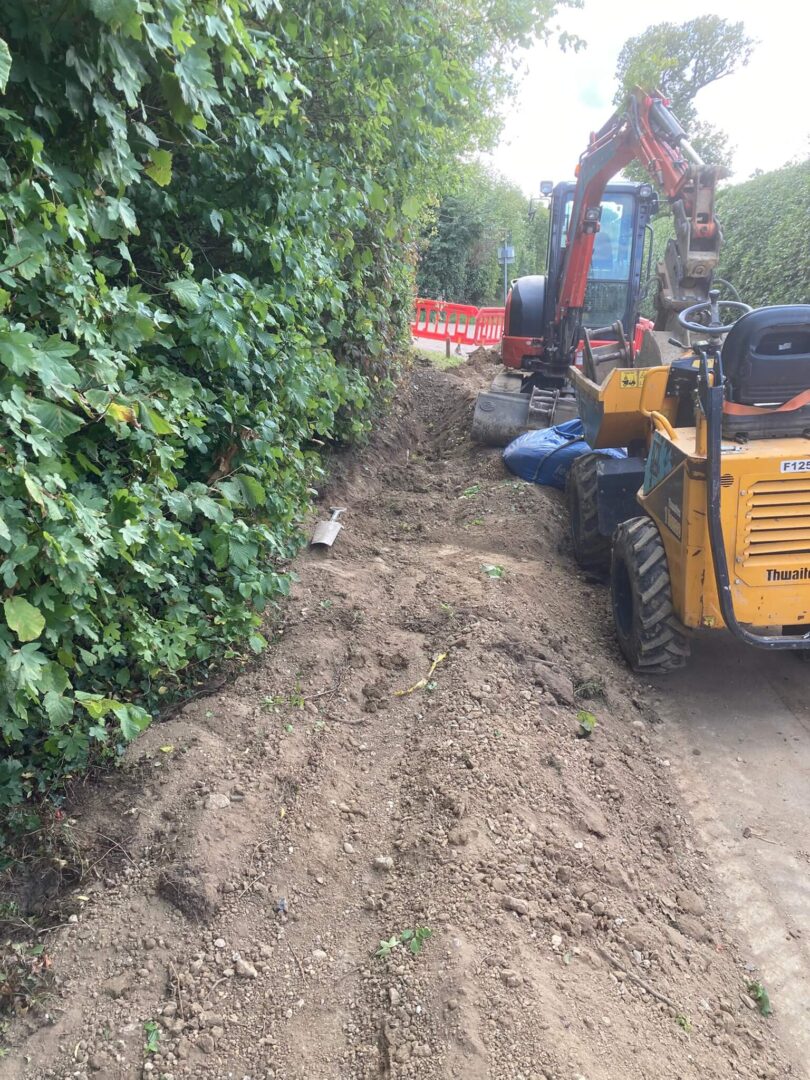
We started our works at the connection point, the existing manhole. This was the ‘start of the run’ prior to our new connection, but it was still well in excess of a metre deep. In our favour, our customer’s property was on a higher level, so we were easily able to get the fall. We core-drilled into the manhole, and also broke out and re-formed some of the benching in the manhole. The pipework was laid across the narrow road and into the verge, and from there it continued up the verge, still in the Highway, all the way to our customer’s property about 35 metres away.
At the boundary with the property, we installed a manhole where the new drainage run turned at near-on 90 degrees. From here we continued into private property.
The existing Treatment Plant was another 20 metres away into private property. This required us to excavate and lay pipework in block paving and in unmade ground in a paddock.
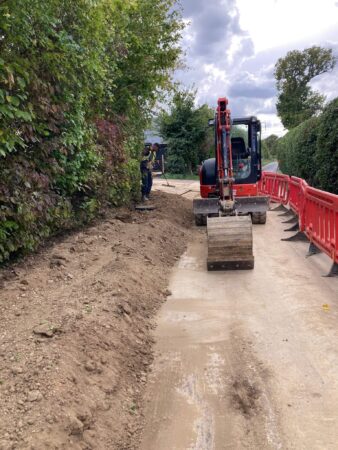
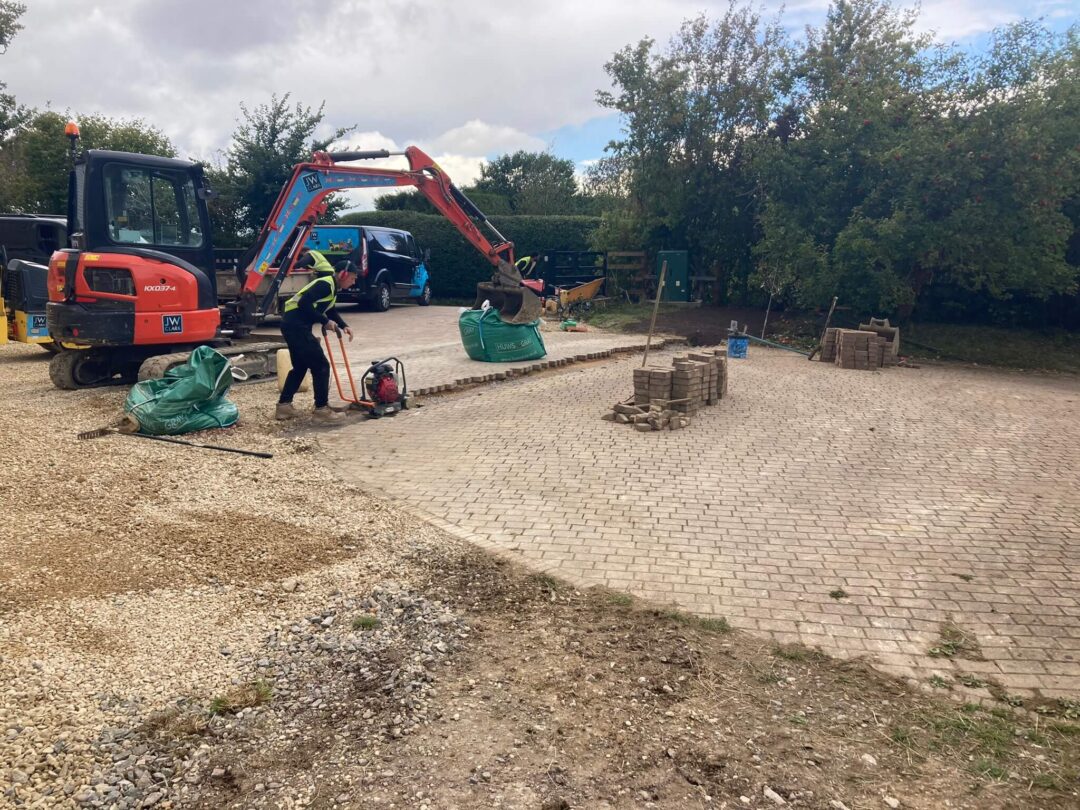
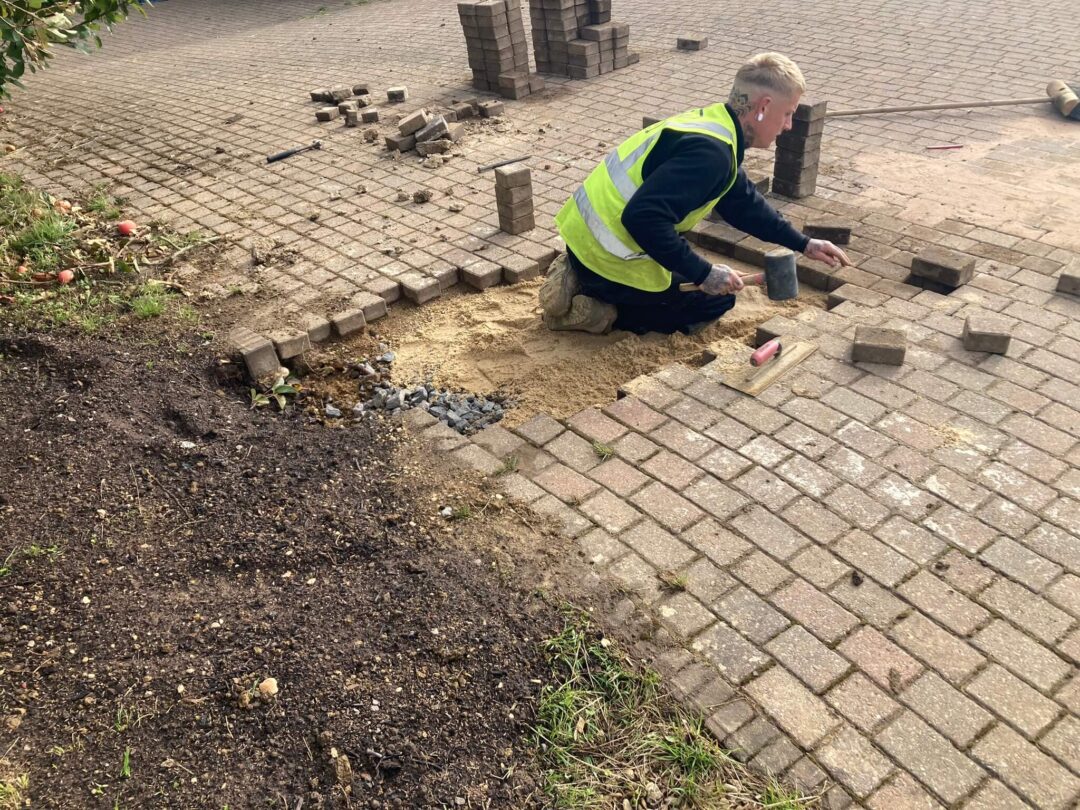
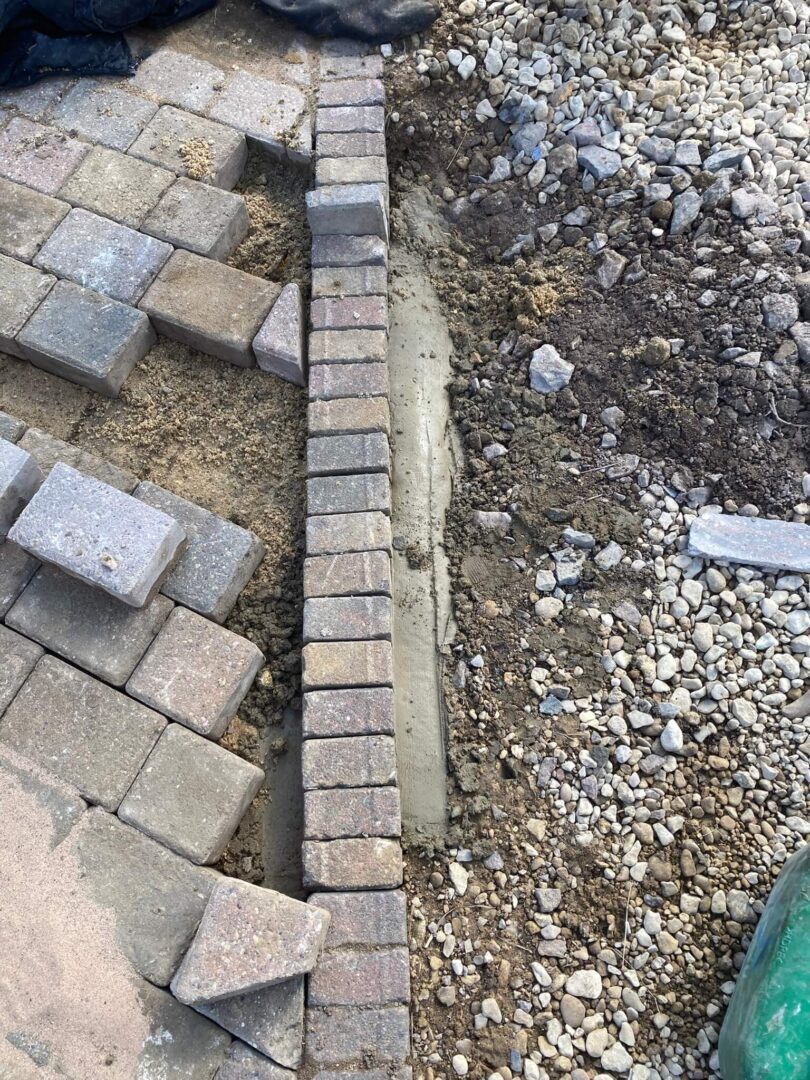
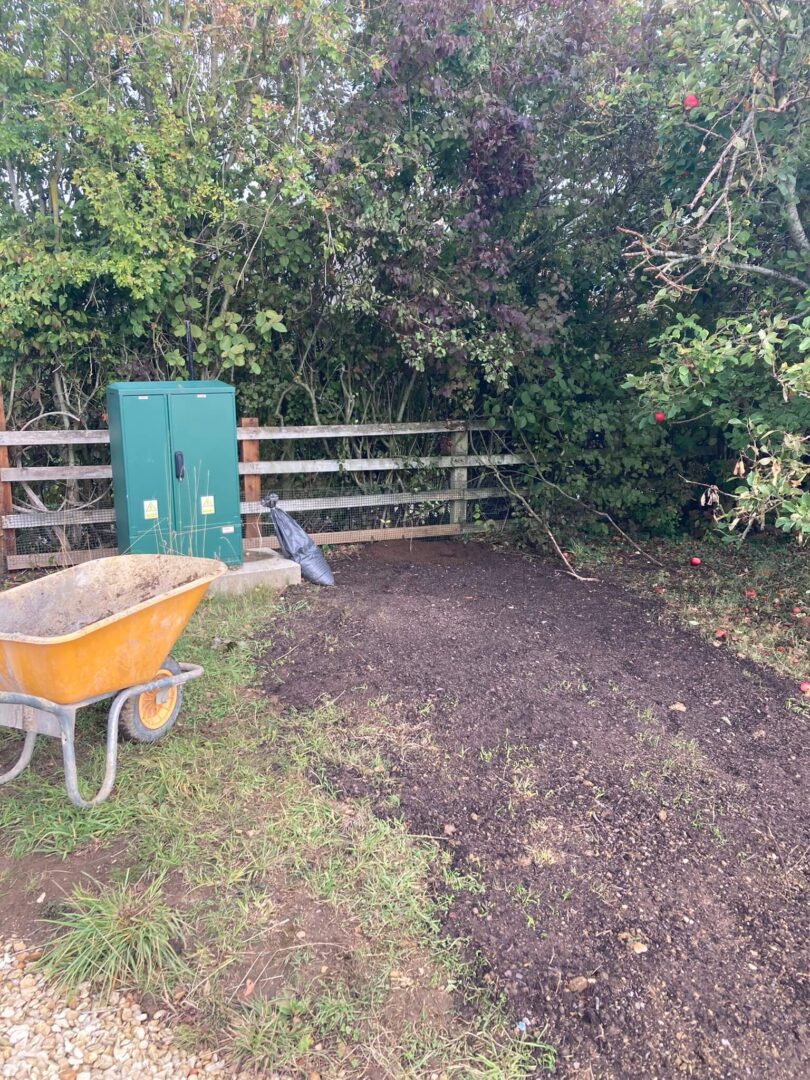
We made the connection into the existing system by tapping into the final manhole in private property, just before the existing Treatment Plant. The customer asked that we decommission the Treatment Plant by filling it with some of the excavated material. To enable us to do this, we asked that he have the Plant emptied one last time, which we arranged.
The block paving was reinstated, as was the verge and grass areas, and in less than 2 weeks our customer was now off his old Treatment Plant and onto the public sewer.
Timeline
Time to quote for the works: Less than a week
Time taken to obtain Section 106 Licence from AW: 2 weeks
Time taken to obtain Section 50 Licence from Highways: 4 weeks
Leadtime to use S50 Licence: 12 weeks – due in part to TTRO (Road Closure)
Time taken to do the work: 10 days
Total time: 20 weeks
Do you need a sewer connection needs doing? Click here to enquire.
Don’t leave it too late for a sewer connection, most people do! Read our article here: How long does it take to do a sewer connection?
Click here to see more of our case studies.















































































































































































































